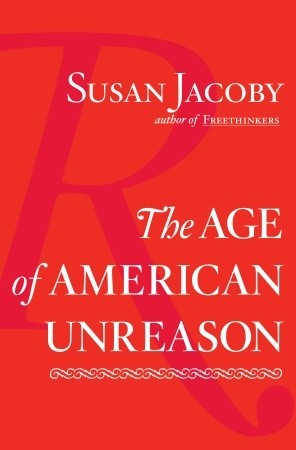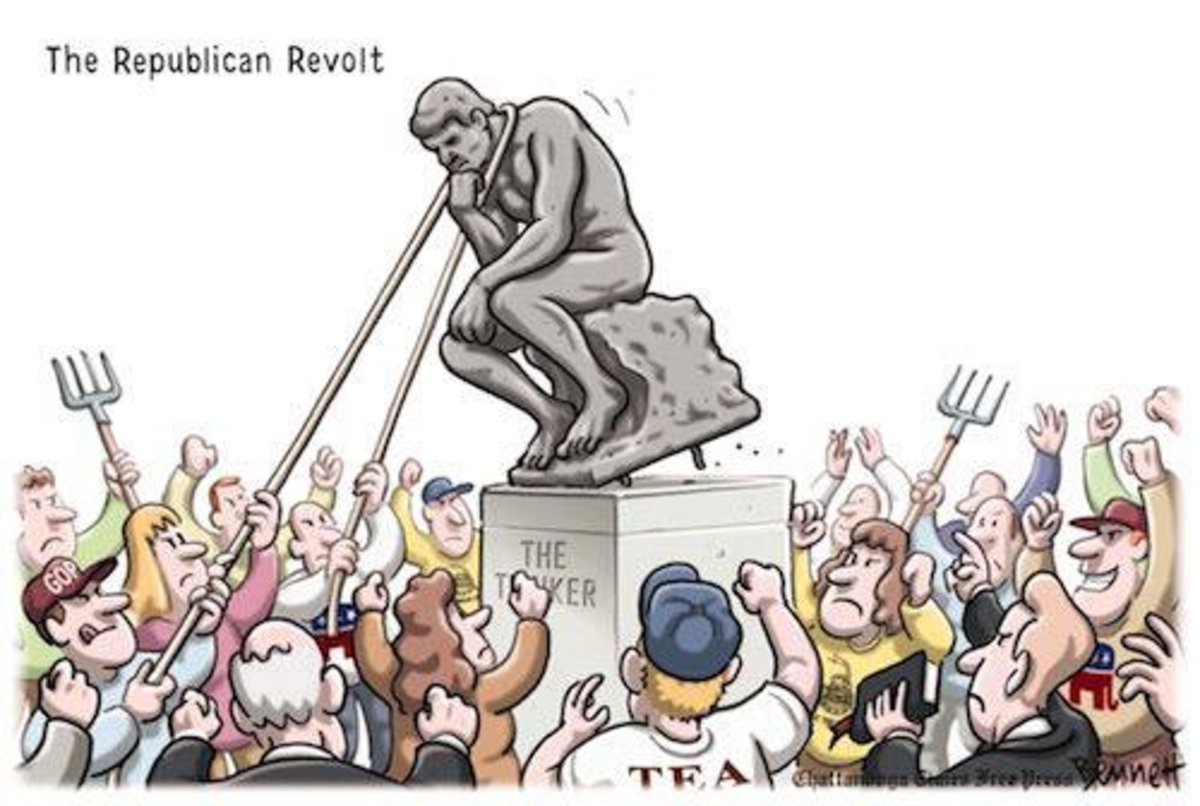The Age of American Unreason by Susan Jacoby: Part Six: A Book Review

Preface
I should have said this at the outset of this series, but I'll say it now. That is, I want to let whomever may be reading this, know that I am not critiquing Susan Jacoby's book, per se. To tell you the truth, I don't really feel qualified to do so---if, by 'critique' you mean state the books "good points" and "bad points," something like that.
You see, I always start these book reviews of mine from a place deference to the author, whose book I'm talking about. That is to say, I am just an amateur Internet writer. I give deference to the writer who is published by a professional publishing house. I cannot imagine how incredibly hard it must be to actually write a book, survive the gauntlet of the quality control process, until the manuscript is shaped into something that X professional publishing house believes is worthy to be published by themselves.
If you have read this series from part one, you know that I have added some material. I am not criticizing Jacoby's work because it did not include this material. I'm certainly not saying that her work should have had this material. I am not directly contradicting her thesis with the material I have presented.
What I see myself as doing is having a dialogue with the text.
Okay?
Okay.
Let's Begin: The L-word
Chapter four of Susan Jacoby's book, "The Age of American Unreason," is titled: Reds, Pinkos, Fellow Travelers.
Now then, those of you of a certain age may remember the U.S. Presidential campaign of 1988, which pitted Vice President George Herbert Walker Bush against the Governor of Massachusetts Michael Dukakis. Bush called Dukakis a "card-carrying liberal." To this day Democrats struggle with that word; they either can't or won't even utter it, much less proudly claim it in relation to their own political philosophies.
A few years ago---I think it was the Hilary Clinton's first Presidential run---Hilary Clinton was asked if she was a liberal. She didn't even acknowledge the word and instead called herself a "Progressive."
As you may know, the trick, of course, is that "card-carrying liberal" sounds too much like "card-carrying communist."
"It is bizarre," writes Susan Jacoby, "that even today, the idea of Communism with a capital "C"---seventeen years after the legal dissolution of its Soviet homeland and more than a half century since Marxism possessed any proselytizing appeal in the West---continues to be used in the United States as a bludgeon against various kinds of liberalism and liberal intellectualism. A week before the 1994 midterm elections, Newt Gingrich, architect of the historic Republican takeover of both houses of Congress, advised Republican lobbyists that the way to win was to portray Democrats as proponents of 'Stalinist' policies and as opponents of 'normal' American values" (1).
This chapter does a good job of showing how a fear of infiltration of Communism into the United States led to a flare up of anti-intellectualism. For me, there are three big takeaways from Chapter 4: "Reds, Pinkos, Fellow Travelers."
1. The so-called "Red Scares" after both World Wars, were actually more "scary" in retrospect, for what they did to American intellectual culture, rather than their formidability at the time. People who lived through it, exaggerated the hardship in Jacoby's view, to bolster their own importance.
2. It was not so much the top-down government action that was the problem. Rather it was the lack of discernment exercised by the public, concerning various kinds of liberalism: which strands were or were not Communist (capital "C"); which were or were not merely "fellow travelers"; and which strands of liberalism were or were not anti-Communist/anti-Soviet. As a result, the public reacted with a kind of uniform suspicion to liberals in general.
Jacoby writes: "One important lesson that the Old Left of the thirties failed to learn from the Red Scare generation was the indifference of nonintellectual Americans to distinctions among shades of pink and red. As far as ordinary Americans were concerned, anarchists, Trotskyists, Stalinists, and socialists, whether homegrown or imported, all belonged in the same boat---preferably a boat bound for Russia" (2).
And the consequences of this: "The crucial importance of sectarian distinctions to leftist intellectuals, and the passion with which they attacked one another over their disagreements, would leave the entire intellectual community vulnerable to political attack when, once again after the Second World War, the public began to care about Reds" (3).
3. The third big takeaway is the contradictory view the American public held of the liberal "egg head" intellectuals, whose commitment to Mom, apple pie, and the American Way had been suspect during the two world wars. After the Second World War, most average Americans realized that these liberal intellectuals were the ones best suited to educate their children, so that they could be better off than their parents, so that they could work with their heads rather than their hands.
"The expansion of higher education, fueled by the GI Bill," writes Jacoby, "created an ever-increasing demand for teachers at the university level, and faculty members who had once earned salaries close to the poverty line were bringing home middle-class paychecks by the end of the fifties" (4).
You see, "[a]t midcentury, the most profound hopes of adults who subscribed to what was then called middlebrow culture were vested in the higher education of their children. The parents of baby boomers dreamed of educating a son who would work with his head instead of his hands and a daughter who would marry a man capable of earning a living with his head and not his hands. And that, too, posed a problem for Americans who needed intellectuals to help fulfill their hopes. Just as many Americans continued to suspect intellectuals of being pinkos, they also suspected---and the latter suspicion was better founded---that snobbish intellectuals looked down on many of the middlebrow aspirations of the people who were willing to pay for their services" (5).
This brings us to what Susan Jacoby calls "middlebrow culture." What is middlebrow culture?
We'll talk about it next time. See you in part seven.
Thank you for reading.
References
1. Jacoby, Susan. The Age of American Unreason. Pantheon Books, 2008. 82-83
2. ibid, 93-94
3. ibid, 94
4. ibid, 101
5. ibid, 102






